QSense OIST Mini-Symposium Info Page
Information for Registered Participants
Zoom Coordinates
All talks will have the same zoom address. It is
https://oist.zoom.us/j/94784782476
and please do not distribute it.
No talks will be recorded.
When you join a talk please change your Zoom nickname to list your institution/name and if possible, please upload a profile photo to your Zoom account. This will display when your vid is paused.
Slack Coordinates
One of the purposes of this mini-Symposium is to build networks and discussions. It is very hard to discuss the topic under disucssion within Zoom itself and so we have made a dedicated Slack Channel available to all registered participants of this mini-Symposium. This channel can be used for in-parallel discussions and chats throughout the mini-Symposium. Following the end of the mini-Symposium this channel will be deleted. You will receive an invitation to join this channel directly via email once your registration is accepted.
Code of Etiquette
This mini-Symposium aims to provide a harassment-free experience for everyone, regardless of gender, gender identity and expression, sexual orientation, disability, physical appearance, body size, race, age, and religion. We do not tolerate harassment of participants in any form. Sexual language and imagery is not appropriate for any talks or associated Slack venuse, including talks. Mini-Symposium participants violating these rules may be sanctioned or expelled from the mini-Symposium at the discretion of the organizers. Harassment includes, but is not limited to:
- Offensive comments related to gender, gender identity and expression, sexual orientation, disability, physical appearance, body size, race, age, and religion
- Sexual images in public spaces
- Deliberate intimidation, stalking, or following
- Harassing photography or recording
- Sustained disruption of talks or other events
- Unwelcome sexual attention
- Advocating for, or encouraging, any of the above behavior
- Participants asked to stop any harassing behavior are expected to comply immediately.
If a participant engages in harassing behavior, the organizers retain the right to take any actions to keep the mini-Symposium a welcoming environment for all participants. This includes warning the offender or expulsion from the mini-Symposium. Organizers may take action to redress anything designed to, or with the clear impact of, disrupting the event or making the environment hostile for any participants. We expect participants to follow the Code of Etiquette at all event modes of communication and associated venues. If someone makes you or anyone else feel unsafe or unwelcome, please report it as soon as possible. Harassment and other Code of Etiquette violations reduce the value of the mini-Symposium for everyone. You can make a personal report by contacting any of the organizers. Organizers will ensure your safety and anonymity. We want you to be happy and comfortable at this event. If you wish to alert the organizers of a code of etiquette violation please email jason.twamley1@oist.jp
Schedule
The lectures will be held on Mondays/Wednesdays/Fridays of each week starting Monday Feb 1. They will be scheduled at the same time of the day depending on your geographical location:
![]()
The lectures will be approx 45 mins long with 10mins for discussion and questions afterwards. Participants are encouraged to discuss on the Slack channel during the lectures and send questions to the Zoom-Chair by Zoom Chat to relay to the speaker at the end of their talk.
Quick Overview of the Schedule
Monday Feb 1 : Fedor Jelezko - Diamond spin qubits: quantum sensing and photoelectric readout
Wednesday Feb 3: Thomas Busch - Cavity-enhanced magnetometer using a spinor Bose-Einstein condensate
Friday Feb 5: Gabriel Hetet - Spin-mechanics with trapped diamonds
Monday Feb 8: Sile Nic Chormaic - Optical nanofibre applications from atomic physics through to quantum optics.
Wednesday Feb 10: Hendrick Ulbricht - Probing new physics by levitated mechanical systems
Friday Feb 12: Yutaka Shikano - Real-time in-vivo thermometry on worms by nitrogen-vacancy center in nanodiamond
Monday Feb 15: Sougato Bose - An experiment for evidencing entanglement via gravity: its motivation, challenges and related sensing opportunities
Wednesday Feb 17: Yuimaru Kubo - Spin Maser for Quantum Information Technologies
Friday Feb 19: Sabine Wölk - Noisy distributed sensing in the Bayesian regime
Monday Feb 22: Tetsuo Kobayashi - Optically Pumped Magnetometer: Advancements and Perspectives for Biomagnetic Neuroimaging
Wednesday Feb 24: Jiangfeng Du - Searching for exotic spin-dependent interactions by NV centers
Monday March 1: Dmitry Budker - Magnetic sensing with NV centers and zero-field NMR
Wednesday March 3: Nobuyuki Matsumoto - Towards quantum sensing with table-top scale pendulum
Friday March 5: Mutsuko Hatano - Diamond electronics for quantum sensing
Monday March 8: Jason Twamley - Towards quantum sensing using nonlinear quantum systems
Monday Feb 1
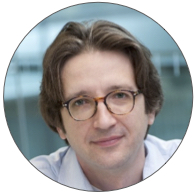
Prof Fedor Jelezko
Diamond spin qubits: quantum sensing and photoelectric readout
A particularly interesting application of diamond based quantum sensing is the detection of nuclear magnetic resonance on nanometer scales, including the detection of individual nuclear spins or small ensembles of external nuclear spins. Single nitrogen vacancy (NV) color centers in diamond currently have sufficient sensitivity for detecting single external nuclear spins and resolve their position within a few angstroms. The ability to bring the sensor close to biomolecules by implantation of single NV centers and attachment of proteins to the surface of diamond enabled the first proof of principle demonstration of proteins labeled by paramagnetic markers and label-free detection of the signal from a single protein. Single-molecule nuclear magnetic resonance (NMR) experiments open the way towards unraveling dynamics and structure of single biomolecules. However, for that purpose, NV magnetometers must reach spectral resolutions comparable to that of conventional solution state NMR. New techniques for this purpose including technique that employs quantum entanglement and machine learning will be discussed. Most of mentioned above results obtained so far with diamond centers are based on optical detection of single NV color centers. Recently it was shown that photoelectrical detection of NV centers base on spin selective photoionization can provide robust and efficient access to spin state of individual color center.
Wednesday Feb 3

Prof Thomas Busch
Cavity-enhanced magnetometer using a spinor Bose-Einstein condensate
We show how a composite light-matter magnetometer can be constructed using a transversely driven multi-component Bose-Einstein condensate coupled to two distinct electromagnetic modes of a linear cavity. Above the critical pump strength, the change of the population imbalance of the condensate caused by an external magnetic field entails the change of relative photon number of the two cavity modes and monitoring the cavity output fields allows for nondestructive measurement of the magnetic field in real time. The sensitivity of the proposed magnetometer exhibits Heisenberg-like scaling with respect to the atom number and for state-of-the-art experimental parameters the lower bound on the sensitivity of such a magnetometer can be shown to be of the order of fT/ \sqrt{Hz}—pT/ \sqrt{Hz} for typical experimental parameters.
Friday Feb 5
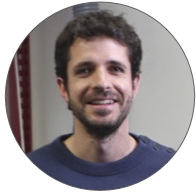
Prof Gabriel Hetet
Spin-mechanics with trapped diamonds
Observing and controlling macroscopic quantum systems has long been a driving force in research on quantum physics. The angular degrees of freedom of levitating diamonds coupled to embedded Nitrogen-Vacancy (NV) centers offer bright prospects towards this purpose. Indeed, using nanodiamonds trapped under low vacuum levels, the inherent quantum nature of the NV spin can in principle be transferred on to its mechanical motion. I will present our demonstrations of coherent manipulations of the spin of NV centers [1] and of the spin-dependent torque and spin-cooling of the angular motion of diamonds levitating in a Paul trap [2]. I will also discuss our more recent progress towards the detection of dipolar interactions between NVs and of the full magneto-optical alignment of the diamond axes along the magnetic field using this spin-mechanical platform.
[1] Delord, et al. Physical review letters 121 (5), 053602 (2018)
[2] Delord, et al. Nature 580 (7801), 56-59 (2020)
Monday Feb 8
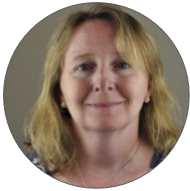
Prof Sile Nic Chormaic
Optical nanofibre applications from atomic physics through to quantum optics.
Ultrathin optical fibres, with diameters on the order of the propagating light wavelength, have already proven their versatility across a variety of different areas, such as sensing, particle manipulation, cold atom physics, and in photonics. The intense evanescent field and very steep field gradient are some of the main advantages offered by these systems as it allows us to achieve ultrahigh light intensities that may otherwise not be attainable in a standard laboratory. In this talk, I will present work conducted at OIST related to the fields of atomic physics and quantum optics. For example, we embed ultrathin fibres into a laser- cooled sample of rubidium atoms for studies related to Rydberg atom formation near a dielectric surface and to study degenerate and nondegenerate two-photon processes. In another example, I’ll discuss work on structured ultrathin fibres that combine a Bragg grating with a cavity for enhanced photon coupling from a quantum emitter. Overall, the versatility of these fibres for many different experimental platforms – particularly if one goes beyond the basic, single mode fibre design – will be promoted.
Wednesday Feb 10

Prof Hendrik Ulbricht
Probing new physics by levitated mechanical systems
I will report on our recent progress with levitated experiments, especially with Meissner levitated ferromagnets above a type-1 superconductor. We find a system with ultralow mechanical damping showing great potential for sensing tiny forces [1] and, interestingly, independent from the standard quantum limit - which holds promise to detect record low magnetic fields and we discuss ideas for a ferromagnetic gyroscope [2], where the precession motional degree of freedom is used to sense tiny magnetic fields. We also discuss how other rotational degrees of freedom can be used for inertial and force detection. We apply force noise measurements to bound collapse models to test the quantum superposition principle in the macroscopic domain of large mass systems [3, 4]. We illustrate ideas to used levitated mechanical systems to probe into gravity interactions leading toward the experimental exploration of the interplay between quantum mechanics and gravity [5]. We also mention ideas to probe into the physics of quantum field theory effects in non-inertial reference frames based on spinning micro-particles [6, 7].
[1] Vinante, A., P. Falferi, G. Gasbarri, A. Setter, C. Timberlake, and H. Ulbricht, Ultrahigh mechanical quality factor with Meissner-levitated ferromagnetic microparticles, Phys. Rev. Appl. 13, 064027 (2020) with Editor's Suggestion, and arXiv:1912.12252.
[2] Fadeev, P., C. Timberlake, T. Wang, A. Vinante, Y. B. Band, D. Budker, A. O. Sushkov, H. Ulbricht, and D. F. J. Kimball Ferromagnetic Gyroscopes for Tests of Fundamental Physics, arXiv:2010.08731 (2020).
[3] Vinante, A., M. Carlesso, A. Bassi, A. Chiasera, S. Varas, P. Falferi, B. Margesin, R. Mezzena, and H. Ulbricht, Narrowing the parameter space of collapse models with ultracold layered force sensors, Phys. Rev. Lett. 125, 100404 (2020), and arXiv:2002.09782.
[4] Vinante, A., G. Gasbarri, C. Timberlake, M. Toroš, and H. Ulbricht, Testing Dissipative Collapse Models with a Levitated Micromagnet, Phys. Rev. Research 2, 043229 (2020) with Editor's suggestion, and arXiv:2008.06245.
[5] Carlesso, M., A. Bassi, M. Paternostro, and H. Ulbricht, Testing the gravitational field generated by a quantum superposition, New J. Phys. 21 093052 (2019), and arXiv:1906.04513.
[6] Braidotti, M. C., A. Vinante, G. Gasbarri, D. Faccio, and H. Ulbricht, Zel'dovich amplification in a superconducting circuit, Phys. Rev. Lett. 125, 140801 (2020), and arXiv:2005.03705.
[7] Lochan, K., H. Ulbricht, A. Vinante, S. K. Goyal, Detecting acceleration-enhanced vacuum fluctuations with atoms inside a cavity, Phys. Rev. Lett. 125, 241301 (2020), and arXiv:1909.09396.
Friday Feb 12
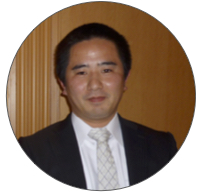
Prof Yutaka Shikano
Real-time in-vivo thermometry on worms by nitrogen-vacancy center in nanodiamond
Temperature affects various physiological functions and is one of the most important factors in homeostasis. However, these physiological functions have not yet understood from the biochemical viewpoint. While several biological samples do not have the temperature receptor, they seem to adapt the temperature. In the standard sense of theoretical physics, the "small-scale" temperature is not well defined. Recently, the room-temperature operated nano-scale thermometry is established to use the nitrogen-vacancy center in nanodiamond. This thermal probe is the bio nontoxic. This is well known as one of the best candidates on the bio-sensing applications. In our study, Caenorhabditis elegans (C. elegans) is considered. C. elegans does not have the temperature receptor but control the aging speed by temperature. As the proof-of-concept experiment on the biological application by the nanodiamond thermometry, we measured the thermogenic response of C. elegans due to the chemical stimuli. This work is basically collaborated with Masazumi Fujiwara group and Eriko Kage-Nakadai group, which are in Osaka City University.
Reference: M. Fujiwara, YS et al, https://advances.sciencemag.org/content/6/37/eaba9636
Monday Feb 15

Prof Sougato Bose
An experiment for evidencing entanglement via gravity: its motivation, challenges and related sensing opportunities
A lack of empirical evidence has lead some researchers to doubt whether gravity is a quantum entity. This is often accompanied by the doubt that sufficiently large masses themselves will not obey the quantum superposition principle beyond a certain scale. We show how mechanisms to engineer ever larger superpositions of ever larger masses eventually gives rise to a domain in which the masses involved become sufficiently large to gravitationally affect each other. In this domain, I will present a feasible idea for a test of the quantum nature of gravity based on the principle that two objects cannot be entangled without a quantum mediator. I will show that despite the weakness of gravity, the phase evolution induced by the gravitational interaction of two micron size test masses in adjacent matter-wave interferometers can detectably entangle them even when they are placed far apart enough to keep Casimir-Polder forces at bay. A prescription for witnessing this entanglement, which certifies gravity as a quantum coherent mediator, is also provided and can be measured through simple spin correlations. Further, I clarify the assumptions underpinning the above proposal such as our reasonable definition of "classicality", as well as the crucial aspect of the locality of physical interactions. We note a few ways to address two principal practical challenges: Screening EM forces and Inertial noise reduction. I will also describe how unprecedented compact sensors for classical gravity (including meter scale sensors for low frequency gravitational waves) will also arise on the way to the above grand goal.
Wednesday Feb 17
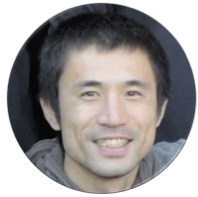
Dr Yuimaru Kubo
Spin Maser for Quantum Information Technologies
Using an ensemble of nitrogen (P1) centers in diamond placed inside a 3D loop-gap resonator, we observe population inversion of a satellite P1 transition when a microwave pump tone is applied to the central P1 transition. This inversion is manifested by the amplification of the probe tone applied to the satellite transition. A mechanism for generating this inversion is proposed, involving higher-order cross relaxations within the P1 centers [1] and spin flip-flops with other defect centers that are also present in the diamond sample. We demonstrate that this “maser amplifier” is very interesting and promising for microwave quantum information and technology applications at millikelvin temperatures.
[1] P. P. Sorokin, G. J. Geller, and I. L. Gelles. Phys. Rev. 118(4), 939-945 (1960).
Friday Feb 19

Dr Sabine Wölk
Noisy distributed sensing in the Bayesian regime
Measuring physical quantities with high precision is of central importance in various branches of science, and using quantum systems offers a (quadratic) advantage. Whenever some unknown signal or function should be sensed using multiple sensors, one is typically faced with a situation that the sensors are at different positions. Furthermore, with the rapid developments in quantum networks, even arrays of such quantum sensors distributed over large distances are in reach. These networks can be used to measure non-local properties such as field gradients or spatial Fourier coefficients, or to increase the precision of atomic clocks, interferometers and telescope networks. While the spatial distribution of sensors is irrelevant for signals without spatial dependence (as often considered in metrological scenarios), this is a crucial asset in the sensing of signals with certain spatial correlations. In addition, realistic quantum metrology needs to take noise and limitations in measurement time, measurement repetitions, and prior knowledge into account.
In this talk, I will first discuss how we can adapt in general (also for spatial independent fields) our quantum system to limitations in measurement time, measurement repetitions, and prior knowledge by varying the spectral range and the number of levels of our quantum system. In sensor networks, this can be achieved by e.g. varying the positions of the sensors. Then, I will discuss how we can protect sensor networks from noise sources with a different spatial distribution than the signal field.
[1] S. Wölk, P. Sekatski and W. Dür, “Noisy distributed sensing in the Bayesian regime “, Quantum. Sci. Technol. 5, 045003 (2020).
[2] P. Sekatski, S. Wölk and W. Dür, “Optimal distributed sensing in noisy environments”, Phys. Rev. Res. 2, 023052 (2020)
Monday Feb 22
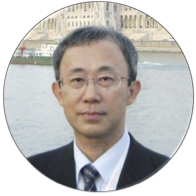
Prof Tetsuo Kobayashi
Optically Pumped Magnetometer: Advancements and Perspectives for Biomagnetic Neuroimaging
Optically pumped magnetometer (OPM) is a sensor based on electron-spin polarization of alkali-metal atoms. In recent years, OPMs operating under spin-exchange relaxation-free (SERF) conditions have reached sensitivities comparable to and even surpassing those of superconducting quantum interference devices (SQUIDs). We have been developing the OPMs with pump-probe arrangement since 2006. In 2011, we proposed the first K-Rb spin-exchange hybrid OPM, in which a circularly polarized pump beam and a linearly polarized probe beam crossed orthogonally in a glass cell including vaporized K and Rb atoms together. The homogeneity of the sensing characteristics of the hybrid OPM inside the cell is able to be increased and its sensitivity is also be improved. In 2017, for the first time, we reported that NMR signals and MRI could be acquired with an OPM operating at a Larmor frequency of 5 kHz without the use of any cryogenics. In this presentation, I start with a basic introduction of OPM, followed by a brief history of its development over the past decades and approaches used to improve this sensing technique. I also introduce our recent results of magnetoencephalography (MEG), NMR/MRI measurements using an OPM module to demonstrate its feasibility as an effective sensor for an MEG-MRI fused system having high spatio-temporal resolution towards next generation biomagnetic neuroimaging. We believe that the applicability of compact and affordable biomagnetic neuroimaging systems might provide important advancements in neuroscience and improve the clinical diagnosis of neuropsychiatric disorders as well.
Wednesday Feb 24
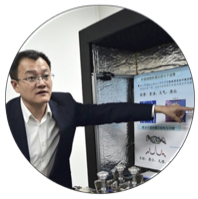
Prof Jiangfeng Du
Searching for exotic spin-dependent interactions by NV centers
The dynamics of the NV centers in diamond can be well controlled and understood by quantum technologies. Thus NV centers can be utilized as promising platforms for quantum computation and quantum sensing. Here, I would like to introduce our recent progress in a novel application of NV centers. We proposed that single-spin qubits, such as NV-centers in the diamond, can be utilized as quantum senor for dark matter searching. By observing and analyzing of the dynamics of the spin system, we have experimentally searched for exotic spin-dependent interactions mediated by axion-like particles [1,2,3,4,5]. Reference
[1] X. Rong, et al., Nature communications 9, 1-7 (2018)
[2] X. Rong, et al., Physical review letters 121, 080402 (2018)
[3] Man Jiao, et al., Physical Review D 101, 115011 (2020)
[4] Man Jiao, et al., arXiv:2009.09257 (2020)
[5] X. Rong, et al., arXiv:2010.15667 (2020)
Monday March 1

Prof Dmitry Budker
Magnetic sensing with NV centers and zero-field NMR
We will discuss some recent results on NV magnetometry, including the progress towards “Extreme NMR,” where a single molecule will be probed with a single NV center at zero magnetic field, see [1]. [1] D. Budker, Extreme nuclear magnetic resonance: Zero field, single spins, dark matter…, Journal of Magnetic Resonance (2019) https://doi.org/10.1016/j.jmr.2019.07.009; arXiv:1905.08851
Wednesday March 3

Prof Nobuyuki Matsumoto
Towards quantum sensing with table-top scale pendulum
Recent progress in the field of laser interferometry has allowed us to directly observe gravitational waves. The matured technology in this field also has potential to shed light onto other scientific objectives such as the search for dark matter, gravitons, and precise measurements of big G. In this talk, I will introduce our recent progress on sensitive displacement measurements of a mg-scale pendulum. Such experiments involving table-top scale mechanical oscillators will pave the way to prepare quantum states of massive objects and will provide a direct insight into the quantum to classical transition as well as the above topics.
Friday March 5

Prof Mutsuko Hatano
Diamond electronics for quantum sensing
Nitrogen-vacancy(NV) centers in diamond have superior physical properties at room temperature for quantum sensing of the magnetic field, electronic field, temperature, and pressure enabling scalable applications from atomic-scale to macroscopic range. We would like to introduce our recent progress on materials, sensor devices, and applications.
Monday March 8

Prof Jason Twamley
Towards quantum sensing using nonlinear quantum systems
The shot-noise, standard quantum limit and Heisenberg limit in sensing refers to how the imprecision of the estimate scales with the resources. I will outline our recent work on how to generate quantum dynamics which can achieve an imprecision which scales faster than 1/N, where N is the mean photon number of the sensing bosonic mode, i.e. the scheme outperforms the standard Heisenberg limit for metrology. We show how these schemes can be used to perform magnetometry and force sensing with super-Heisenberg scaling in the resource.



